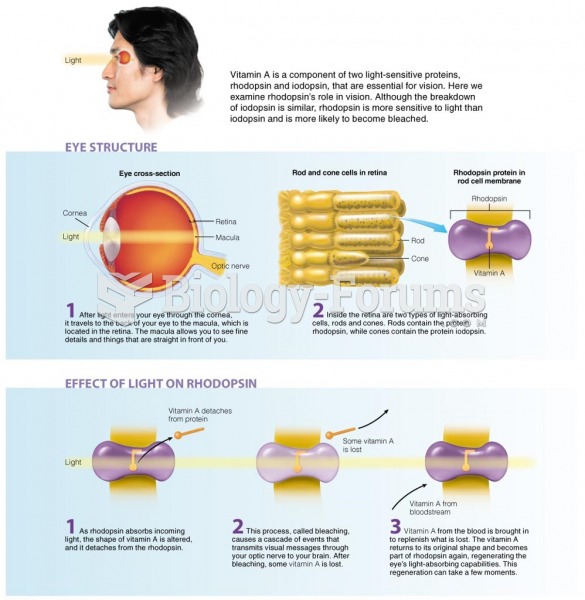Answer to Question 1
Correct Answer: 1
Rationale 1: Miotic agents (Isopto) produce various responses in the eye, including dilation of the trabecular meshwork so that the canal of Schlemm can absorb more aqueous humor, thus decreasing intraocular pressure. Side effects are temporary, and include blurred vision and accommodation effects.
Rationale 2: Use only half the dose, and monitor the results is incorrect. Side effects are temporary, and include blurred vision and accommodation effects.
Rationale 3: I will have the physician prescribe something different for you is incorrect. Side effects are temporary, and include blurred vision and accommodation effects.
Rationale 4: You have an allergy, and should stop using the drops is incorrect. Side effects are temporary, and include blurred vision and accommodation effects.
Global Rationale: Miotic agents (Isopto) produce various responses in the eye, including dilation of the trabecular meshwork so that the canal of Schlemm can absorb more aqueous humor, thus decreasing intraocular pressure. Side effects are temporary, and include blurred vision and accommodation effects. Use only half the dose, and monitor the results is incorrect. Side effects are temporary, and include blurred vision and accommodation effects. I will have the physician prescribe something different for you is incorrect. Side effects are temporary, and include blurred vision and accommodation effects. You have an allergy, and should stop using the drops is incorrect. Side effects are temporary, and include blurred vision and accommodation effects.
Answer to Question 2
Correct Answer: 1
Rationale 1: The maximum effect occurs 12 hours after administration.
Rationale 2: The maximum effect occurs 12 hours after administration.
Rationale 3: The maximum effect occurs 12 hours after administration.
Rationale 4: The maximum effect occurs 12 hours after administration.
Global Rationale: The maximum effect occurs 12 hours after administration. All the other choices are incorrect.







